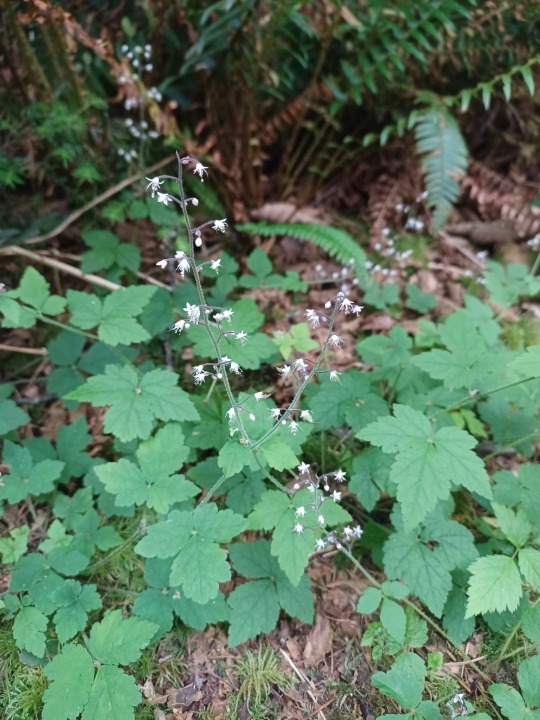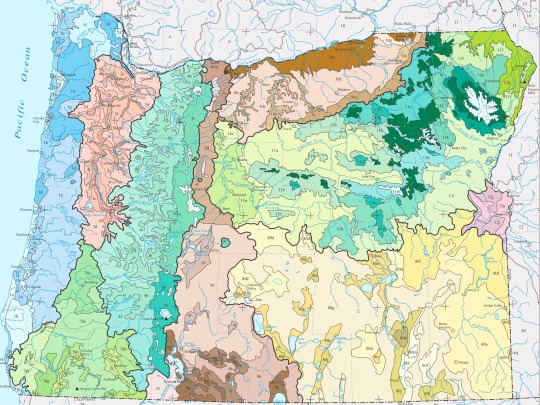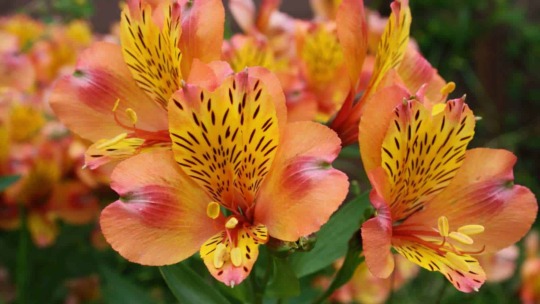#google lens app
Link
Google Lens es App una herramienta de reconocimiento de imágenes creada por Google para ayudar a los usuarios a encontrar información sobre objetos identificados mediante análisis visual basado en redes neuronales. Esta tecnología ofrece una solución rápida para aquellos que desean descubrir la información relevante que se encuentra detrás de una imagen. La aplicación está diseñada para detectar los objetos que el usuario está mirando y luego buscar en la web para encontrar información adicional. Esta herramienta se ha convertido en una de las principales aplicaciones de la tecnología de reconocimiento de imágenes en la actualidad.
0 notes
Text
An App Does Not a Master Naturalist Make
Originally posted on my website at https://rebeccalexa.com/app-not-master-naturalist/ - I had written this as an op-ed and sent it to WaPo, but they had no interest, so you get to read it here instead!
I have mixed feelings about Michael Coren’s April 25 Washington Post article, “These 4 free apps can help you identify every flower, plant and tree around you.” His ebullience at exploring some of the diverse ecological community around him made me grin, because I know exactly what it feels like. There’s nothing like that sense of wonder and belonging when you go outside and are surrounded by neighbors of many species, instead of a monotonous wall of green, and that is a big part of what led me to become a Master Naturalist.
When I moved from the Midwest to the Pacific Northwest in 2006, I felt lost because I didn’t recognize many of the animals or plants in my new home. So I set about systematically learning every species that crossed my path. Later, I began teaching community-level classes on nature identification to help other people learn skills and tools for exploring their local flora, fauna, and fungi.

Threeleaf foamflower (Tiarella trifoliata)
Let me be clear: I love apps. I use Merlin routinely to identify unknown bird songs, and iNaturalist is my absolute favorite ID app, period. But these tools are not 100% flawless.
For one thing, they’re only as good as the data you provide them. iNaturalist’s algorithms, for example, rely on a combination of photos (visual data), date and time (seasonal data), and GPS coordinates (location data) to make initial identification suggestions. These algorithms sift through the 135-million-plus observations uploaded to date, finding observations that have similar visual, seasonal, and location data to yours.
There have been many times over the years where iNaturalist isn’t so sure. Take this photo of a rather nondescript clump of grass. Without seed heads to provide extra clues, the algorithms offer an unrelated assortment of species, with only one grass. I’ve gotten that “We’re not confident enough to make a recommendation” message countless times over my years of using the app, often suggesting species that are clearly not what I’m looking at in real life.

Because iNaturalist usually offers up multiple options, you have to decide which one is the best fit. Sometimes it’s the first species listed, but sometimes it’s not. This becomes trickier if all the species that are suggested look alike. Tree-of-Heaven (Ailanthus altissima), smooth sumac (Rhus glabra) and eastern black walnut (Juglans nigra) all have pinnately compound, lanceolate leaves, and young plants of these three species can appear quite similar. If all you know how to do is point and click your phone’s camera, you aren’t going to be able to confidently choose which of the three plants is the right one.

Coren correctly points out that both iNaturalist and Pl@ntNet do offer more information on suggested species—if people are willing to take the time to look. Too many assume ID apps will give an easy, instant answer. In watching my students use the app in person almost everyone just picks the first species in the list. It’s not until I demonstrate how to access the additional content for each species offered that anyone thinks to question the algorithms’ suggestions.
While iNaturalist is one of the tools I incorporate into my classes, I emphasize that apps in general are not to be used alone, but in conjunction with field guides, websites, and other resources. Nature identification, even on a casual level, requires critical thinking and observation skills if you want to make sure you’re correct. Coren’s assertion that you only need a few apps demonstrates a misunderstanding of a skill that takes time and practice to develop properly—and accurately.
Speaking of oversimplification, apps are not a Master Naturalist in your pocket, and that statement —while meant as a compliment–does a disservice to the thousands of Master Naturalists across the country. While the training curricula vary from state to state, they are generally based in learning how organisms interact within habitats and ecosystems, often drawing on a synthesis of biology, geology, hydrology, climatology, and other natural sciences. A Master Naturalist could tell you not only what species you’re looking at, but how it fits into this ecosystem, how its adaptations are different from a related species in another ecoregion, and so forth.

Map showing Level III and IV ecoregions of Oregon, the basis of my training as an Oregon Master Naturalist.
In spite of my criticisms, I do think that Coren was absolutely onto something when he described the effects of using the apps. Seeing the landscape around you turn from a green background to a vibrant community of living beings makes going outside a more exciting, personal experience. I and my fellow nature nerds share an intense curiosity about the world around us. And that passion, more than any app or other tool, is fundamental to becoming a citizen naturalist, Master or otherwise.
Did you enjoy this post? Consider taking one of my online foraging and natural history classes or hiring me for a guided nature tour, checking out my other articles, or picking up a paperback or ebook I’ve written! You can even buy me a coffee here!
#iNaturalist#plant apps#Seek#Merlin#nature#wildlife#plant identification#apps#botany#biology#science#scicomm#science communication#Google Lens#naturalist#Master Naturalist#conservation#environment
623 notes
·
View notes
Text

i feel like no one is talking about this. google lens is just so much worse than reverse image search like just let me see where an image is from
#rant#google#apps#features#reverse image search#google lens#tech#technology#google update#minyicho#internet#internet drama#updates#twitter#tweets#viral tweets#funny tweets#funny twitter#relatable#relatable tweets#relatable twitter#relatable memes#memes#twitter memes#twitter jokes#twitter update
32 notes
·
View notes
Text
Workin on my passion project, got held up since I had to work in office the last two days.
But it’s progress and I’m still proud of it considering I started almost mid month and I’m almost finished with chapter 6 of my translation.
I keep forgetting my in office days will impact my progress. I’m done by the time I get home, no focus for extra things.
Almost 6 out of 51….it’s moving!
#cheap translate#google lens from the Google app#couldn’t wait for someone else to translate it#imma do it myself#so I can read the damn story
3 notes
·
View notes
Text
AI in Healthcare - The Paradigm Shift with Google Lens Dermatology
Technology is ever-evolving with Google, the tech behemoth at the forefront of innovation. The most recent leap in its suite of solutions comes from an Artificial Intelligence (AI)-driven dermatology feature in Google Lens. Let’s explore the role of AI in Healthcare.
The Inception of Dermatology in Google Lens through AI
graph TD;
A[AI in Google Lens] –> B{Dermatology Functionality}
B –>…

View On WordPress
0 notes
Text

Google to Shut Down Street View App in 2023
From now on the Google Lens icon will prominently feature on the Google Search homepage, the web giant has announced. Meanwhile, a recent report claims that Google intends to discontinue its Street View app in March 2023.
0 notes
Text
Is Google Lens Underrated?
Is Google Lens Underrated?
Branding is about uniqueness in customers’ minds, and with 4.6 rating out of 5 based on 1.5+ million votes, having more than 1 billion download till today, Google Lens is surely getting popular. However, 1.5+ million votes appear to be low compared to its download, may be users are not exploring enough the true capabilities of this app, we don’t know.
Google lens is based on image processing…
View On WordPress
0 notes
Note
Is there an insect ID app you recommend?? I live and work on farms so I see all kinds of weird bugs that I can’t name.
It’s a lot of fun to watch and learn about the little guys all around, but I definitely don’t trust something like Google lens to ID things that are venomous/dangerous.
Seek by iNaturalist is probably the best one, but it still makes mistakes. If you care about an accurate ID, I'd recommend always double checking the ID manually using their actual website, inaturalist.org/observations
You can sort by bug type and general location (state or province is usually best) to narrow it down and view options to make sure it matches with what the app suggested.
But in most locations, it's very unlikely you'd have anything to be very worried about as far as actually dangerous bugs go.
86 notes
·
View notes
Text
So. ID apps. Do I use them in my classes? Yes, but only iNaturalist, because you get an additional layer of verification by actual human beings rather than just the initial algorithmic suggestions. And, more importantly, I stress again and again and again that apps are NOT to be the only tool you use, but need to be used in conjunction with field guides, online groups, and other tools, which we also discuss in class. This is especially true if you're planning to eat anything you pick.
I get incredibly frustrated by how ID apps are often touted as all you need to identify animals, plants, and fungi. (I've even seen them described as "a Master Naturalist in your pocket".) Yes, it's nice to have a convenient tool on your phone that allows you to take a picture of something and get a suggestion of what it is. But that's all it is--a suggestion. iNaturalist, Google Lens, PlantSnap, and other apps are incapable of critical thinking and observation skills. All they can do is take the visual, temporal, and location data that you give them and churn up suggestions based on whatever they already have in their databases.
Nature identification is a detail-oriented skill that takes time and practice to learn, and if you want to do it right there aren't any one-step shortcuts. Can an app potentially narrow down the possible species you're observing? Sure. But YOU still have to be the one to do the actual work in determining whether the species the app has suggested is the one you're looking at in person or not; you CANNOT just take the app at its word, because apps can often be wrong.
And this is even more the case when we're talking about edible mushrooms, many of which have lookalikes. (Trying to figure out which Little Brown Mushroom you have can be an exercise in frustration, to say the least.) While there are a lot of people getting into foraging who are willing to do the actual work needed to determine a given mushroom's species, there are unfortunately also those who just want quick and easy answers without a lot of effort, and those are the people who are going to go no further than the app's results. The articles that promote apps as the quick and easy answers these people want aren't helping, either.
By the way, I am ALWAYS happy to help people find resources to help them with identifying various beings in nature. I'm also fine with taking a look at photos and giving my perspective on what something may be (though, again, don't use me as your only source.) While I do teach foraging, I am first and foremost a nature identification instructor, and I want to help people go about learning the life forms around them correctly (and in the case of edible species, safely.)
#nature identification#identification apps#plant apps#mushroom apps#foraging#mushroom foraging#mushroom hunting#mushrooms#fungi#plants#wild foods#nature#ecology#science#educational#mushroom poisoning#poisonous plants#mycology#botany
60 notes
·
View notes
Note
Do you have a source for that Washington Post tweet with the list of billionaires funding that bill to change public opinion regarding Palestinian genocide. The one that included higher ups at Dell and Starbucks etc? I don't doubt it but I'd like to get more info and googling is NOT helping rn
according to the wp article :
it's a what's app chat group , here is te quote :
"People with direct access to the chat log’s contents supplied them to The Post. They shared the information on the condition of anonymity because the chat’s contents were meant to stay private. Members of the group verified the chat’s existence and their comments."
but the article included those names :
A group of billionaires and business titans working to shape U.S. public opinion of the war in Gaza privately pressed New York City’s mayor last month to send police to disperse pro-Palestinian protests at Columbia University, according to communications obtained by The Washington Post and people familiar with the group.
Business executives including Kind snack company founder Daniel Lubetzky, hedge fund manager Daniel Loeb, billionaire Len Blavatnik and real estate investor Joseph Sitt held a Zoom video call on April 26 with Mayor Eric Adams (D), about a week after the mayor first sent New York police to Columbia’s campus, a log of chat messages shows.
The chat was initiated by a staffer for billionaire and real estate magnate Barry Sternlicht
[..]
The messages describing the call with Adams were among thousands logged in a WhatsApp chat among some of the nation’s most prominent business leaders and financiers, including former Starbucks CEO Howard Schultz, Dell founder and CEO Michael Dell, hedge fund manager Bill Ackman and Joshua Kushner, founder of Thrive Capital and brother of Jared Kushner, former president Donald Trump’s son-in-law.
[article link]
24 notes
·
View notes
Text
Cool article about viewing the internet through an ecological lens and why it's bad for the vast majority of online stuff to be owned and run by Google, Microsoft, and Apple.
"Technologists are great at incremental fixes, but to regenerate entire habitats, we need to learn from ecologists who take a whole-systems view. Ecologists also know how to keep going when others first ignore you and then say it’s too late, how to mobilize and work collectively, and how to build pockets of diversity and resilience that will outlast them, creating possibilities for an abundant future they can imagine but never control."
"many people born after 2000 probably think a world with few insects, little ambient noise from birdcalls, where you regularly use only a few social media and messaging apps (rather than a whole web) is normal. As Jepson and Blythe wrote, shifting baselines are 'where each generation assumes the nature they experienced in their youth to be normal and unwittingly accepts the declines and damage of the generations before.' Damage is already baked in. It even seems natural.
Ecology knows that shifting baselines dampen collective urgency and deepen generational divides. People who care about internet monoculture and control are often told they’re nostalgists harkening back to a pioneer era. It’s fiendishly hard to regenerate an open and competitive infrastructure for younger generations who’ve been raised to assume that two or three platforms, two app stores, two operating systems, two browsers, one cloud/mega-store and a single search engine for the world comprise the internet. If the internet for you is the massive sky-scraping silo you happen to live inside and the only thing you can see outside is the single, other massive sky-scraping silo, then how can you imagine anything else?"
That's what we in environmental studies call a crisis of imagination!
“Ecologists have reoriented their field as a ‘crisis discipline,’ a field of study that’s not just about learning things but about saving them. We technologists need to do the same.”
22 notes
·
View notes
Text
Last Line Tag
Since I've been so focused on world building, these have built up!
Thanks to @frostedlemonwriter here, @aziz-reads here and here, @pb-dot here, @buffythevampirelover here, @dyrewrites here, and @cowboybrunch here.
I made this edit when posting the scene early for today's @sipofsnips when I realized Google Lens doesn't work that effectively in my experience
From The Secret Portal Part One (Ash POV)
I wondered if I could find their species, so I stood, pulling my phone out of my pocket to take a picture to run through the plant identifyer app my science teacher made us download, but it didn’t even turn on.
My professor has an app like that
Tagging @blind-the-winds @little-peril-stories @eccaiia @mk-writes-stuff @ahordeofwasps @sleepywriter00 @i-can-even-burn-salad @mysticstarlightduck or else who wants to hop on
TSP intro
TSP tag list (ask to be +/-): @thepeculiarbird @illarian-rambling @televisionjester @fairy-tales-of-yesterday
#the secret portal#tsp#teaspoon#tsp excerpt#last line#writing tag game#wip excerpt#ash hathaway#writing blog#writers on tumblr#writing community#writers of tumblr#writing on tumblr#writeblr#writeblr community
21 notes
·
View notes
Text
Writing Trauma Center fic is being able to accept a world where Naomi can hear the voices of the dead through their phone without question, but wondering if Gabe using a Google Lens type translation app in 2017 is a step too far.
#google lens was released in 2018#trauma center fanfic#fanfic writer problems#trauma team#trauma center
13 notes
·
View notes
Text
i hate you google lens i hate you websites that force me to download an app to view in mobile i hate you .webp file format i hate you wireless headphones i hate you touchscreens in cars i hate you amazon alexa i hate you instagram algorithm i hate you tiktok influencers i hate you cryptocurrency i hate you content farms i hate you youtube sponsorships
609 notes
·
View notes
Text


Hey cat owners! Any true lily is toxic to your cat. Even if they haven't eaten any portion of the plant, the pollen getting on them can lead to them grooming and ingesting the pollen.
Best advice is to not have true lilies in your home to avoid exposure. If your cat HAS been exposed, please contact an emergency facility immediately and have your cat seen!
Safe "lilies" to have in your home:
Peruvian lilies are still very colorful but they are not true lilies. They are more safe for homes with cats, but can cause gi upset if ingested:

Peace lilies aren't as colorful, but they are beautiful. They are not as dangerous because they're not true lilies. Can cause drooling and excessive pawing / licking at mouth.

Another common plant in my family that often gets given in bouquets is Hydrangeas. They are toxic to basically any domestic animal:

An emergency vet office may ask you to contact pet poison control if your pet has ingested a plant that is toxic. If you're ever unsure what type of plant or fungi was ingested you should bring a sample of it to the facility you go to. (Stem with flowers or a mushroom.) You can also try to use an app like google lens.
7 notes
·
View notes